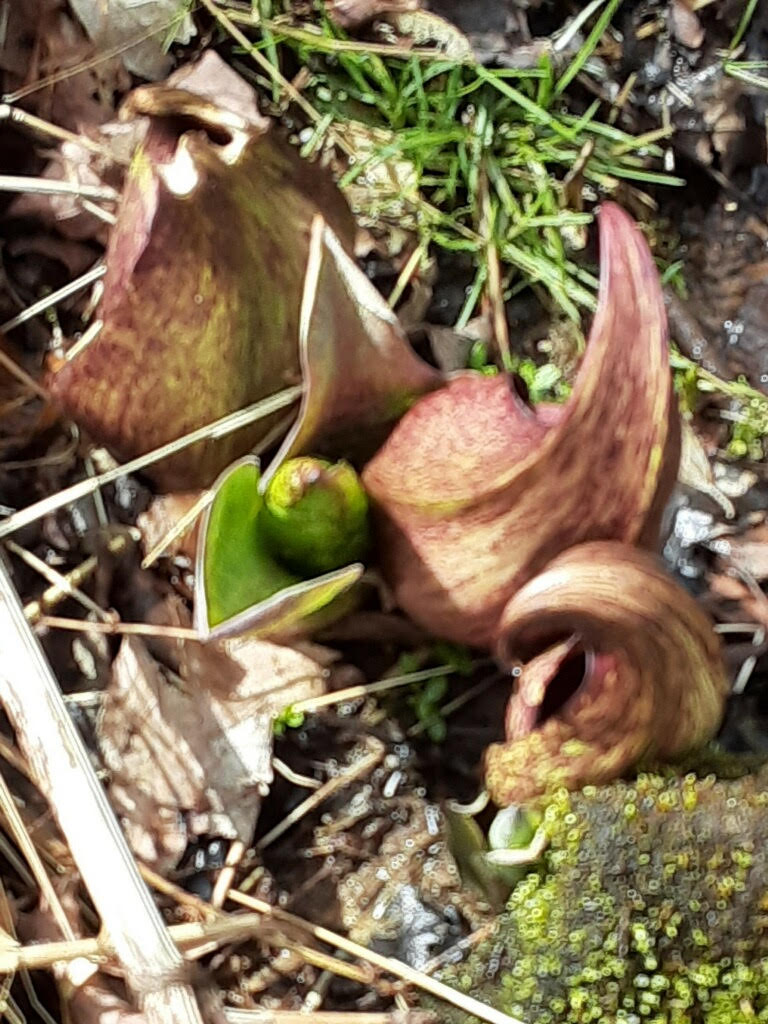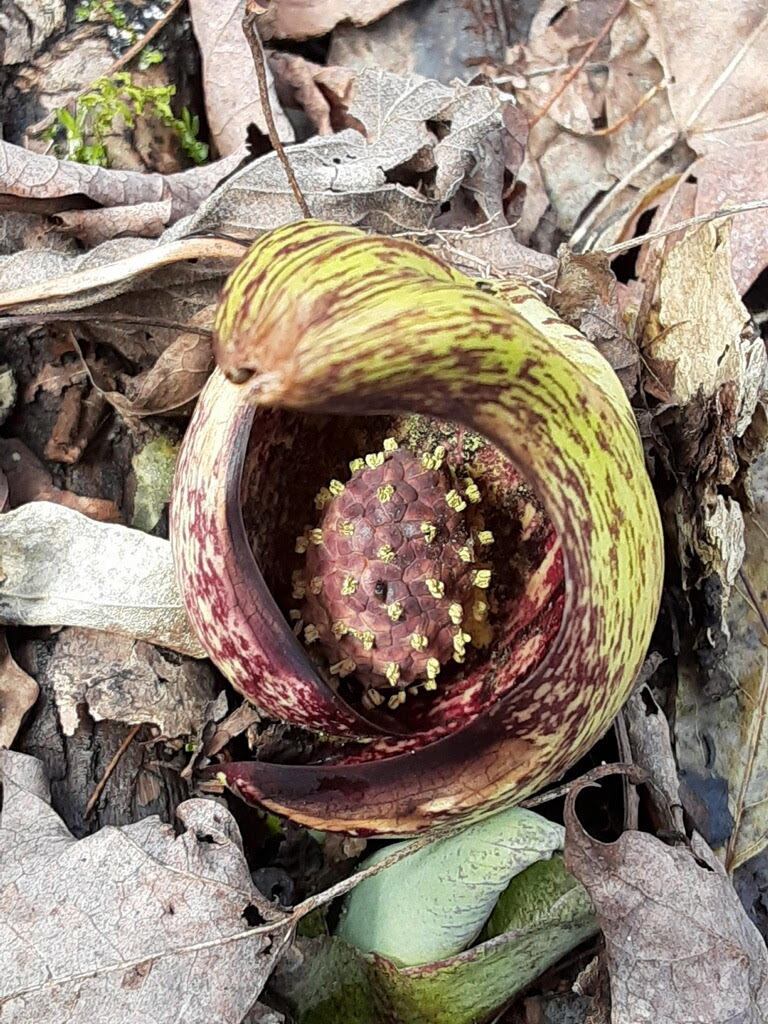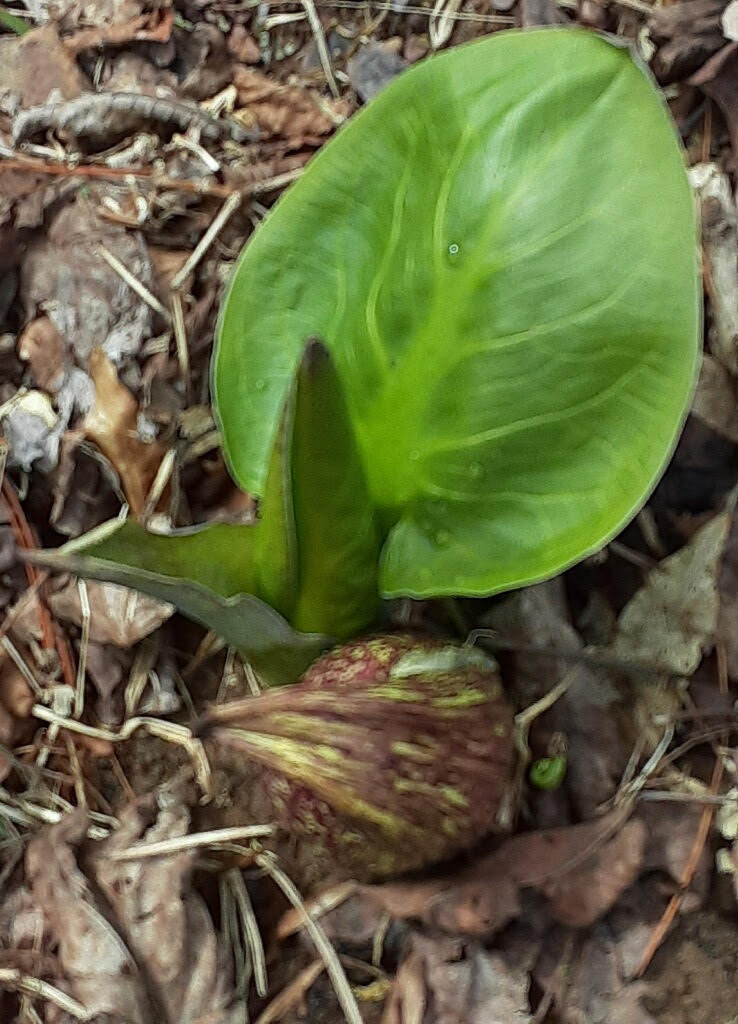By, Susan Sprout
To all warm-blooded mammals reading this article – You undergo a process called “thermogenesis” to create your own body heat. Did you know that Skunk Cabbage is one of the few plant species that does this as well? Tramping along streams in very early spring, especially while snow and frost are still noticeable, you can see the purple and green mottled blossoms of Skunk Cabbage emerging from the cold, hard ground. They are able to because they use some of the carbohydrates they made last year, and stored in their foot-long, six-inch wide central root, to produce the heat energy they use to melt their way upward through the snow and out into the cold air. Their internal furnace can reach up to 60 degrees inside their four to six inch spathe or hooded cover that surrounds the club-shaped flower cluster or spadix. You may remember seeing the word “spathe” in an earlier article describing Green Dragon which is, along with Jack-in-the-Pulpit and Skunk Cabbage, a member of the Arum Family.

Skunk Cabbage is a wetland plant that grows near swamps, marshes, and in wet woodlands. It takes five to seven years before a young plant can blossom. In spring, it flowers before its bright green leaves come up and unfurl. Then these plants really become obvious because their big leaves can grow from fifteen to twenty-one inches long and twelve to fifteen inches wide! While walking along Big Run, I found about fifty blossoms starting to emerge. They were in all stages of growth, and some were beginning to leaf out.
When I pulled the edges of the spathe apart to look inside at the flowers, bunches of gnats and flies came zooming out. They were pollinators attracted by the warm air and stinky, putrescent odor. The name “skunk” is well-deserved in a plant with chemicals like skatole and cadaverine in its tissues to attract pollinators. Not many animals eat the roots, leaves or flowers either except bears in spring (They’ll eat anything.) and snapping turtles – because of the intense burning caused by calcium oxylate crystals found in their tissues. Slugs and snails help break down the dead plant when it dies back and goes dormant in the late summer.

This is not a “cabbage” you should eat, although people have eaten it in the past after boiling three times and drying. Its leaves have been used medicinally for skin problems – ulcers, wounds, blisters. Fresh leaves can also cause blisters, too. I found one reference of root usage in 1708 for treating “suppurating tumors”.

This is a pretty hardy plant. but it does not bounce back well from the deforestation and water level changes that accompany clear cutting, agriculture, and development.

